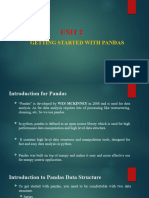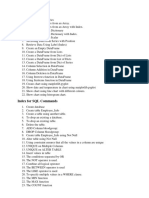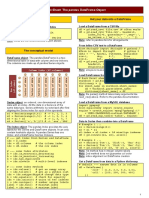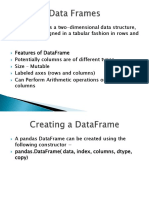0% found this document useful (0 votes)
48 views23 pagesLoading Pandas
The document provides a comprehensive guide on using the Pandas library in Python for data manipulation, including reading files, creating Series and DataFrames, performing arithmetic operations, and querying data. It also covers data preprocessing techniques, handling missing values, and visualizing data using Matplotlib and Seaborn. Key functionalities such as indexing, slicing, and plotting are illustrated with code examples.
Uploaded by
AliCopyright
© © All Rights Reserved
We take content rights seriously. If you suspect this is your content, claim it here.
Available Formats
Download as PDF, TXT or read online on Scribd
0% found this document useful (0 votes)
48 views23 pagesLoading Pandas
The document provides a comprehensive guide on using the Pandas library in Python for data manipulation, including reading files, creating Series and DataFrames, performing arithmetic operations, and querying data. It also covers data preprocessing techniques, handling missing values, and visualizing data using Matplotlib and Seaborn. Key functionalities such as indexing, slicing, and plotting are illustrated with code examples.
Uploaded by
AliCopyright
© © All Rights Reserved
We take content rights seriously. If you suspect this is your content, claim it here.
Available Formats
Download as PDF, TXT or read online on Scribd
/ 23
































































































